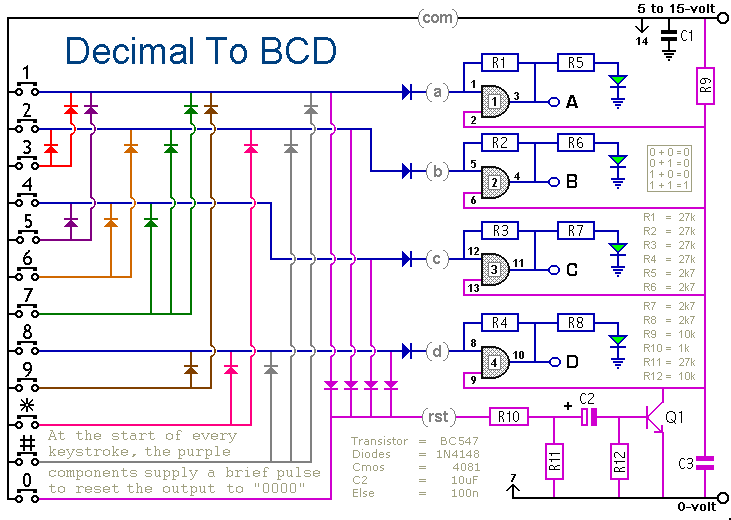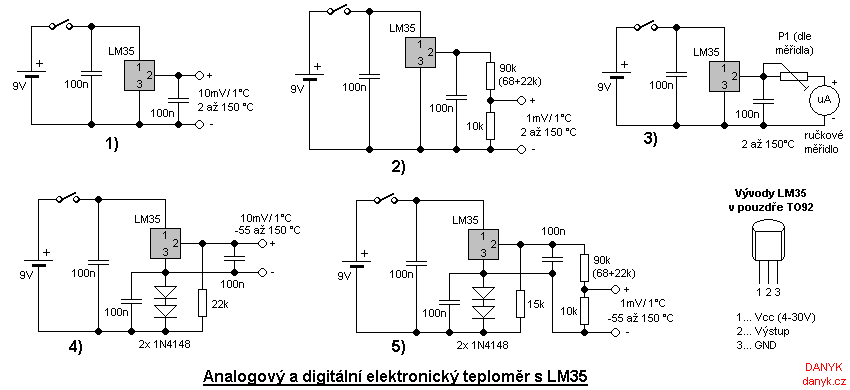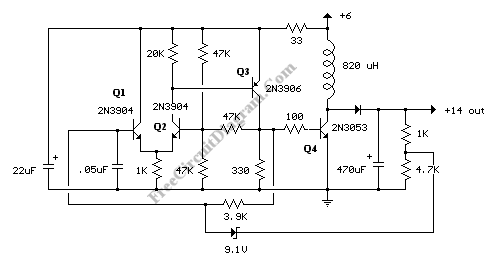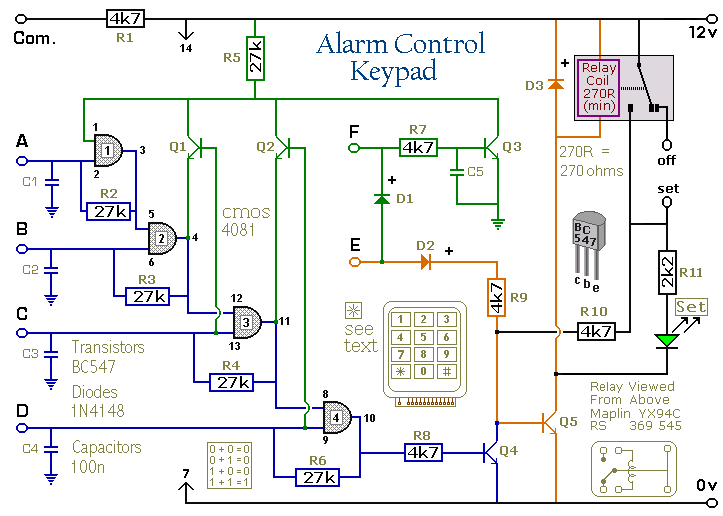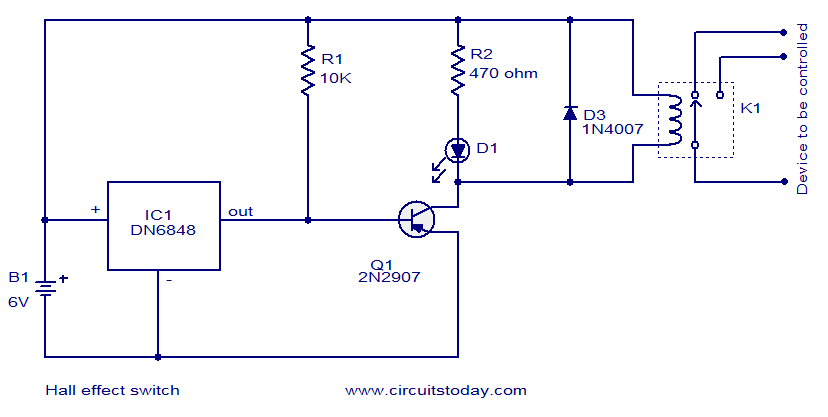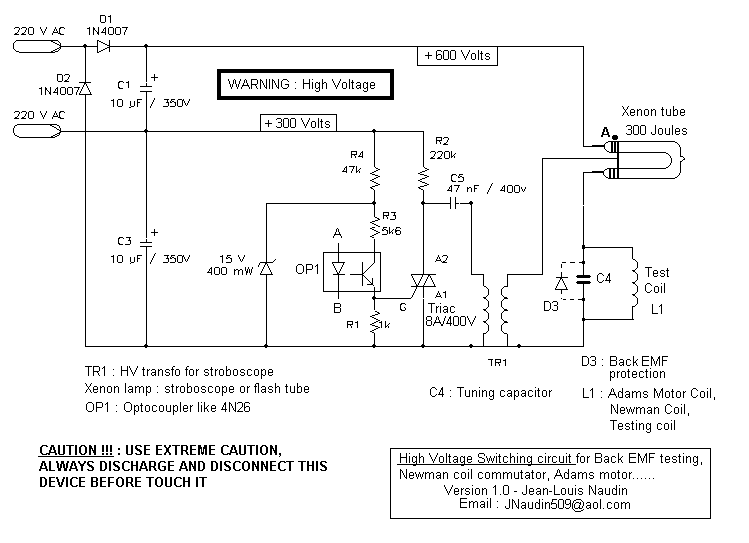
4 digit keypad controlled switch
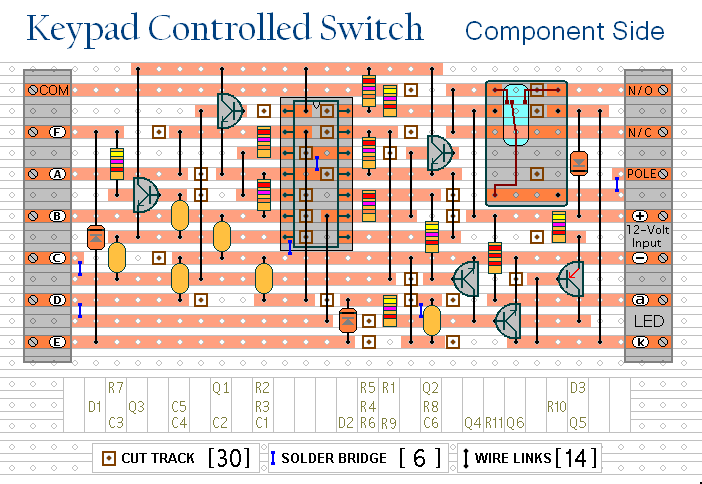
This is a universal version of the four-digit alarm control keypad. The design has been modified to free up the relay contacts, enabling the circuit to function as a general-purpose switch. A single pole changeover (SPCO) or single pole double throw (SPDT) relay has been used, though a multi-pole relay can be utilized if desired.
The four-digit alarm control keypad serves as an interface for user input, allowing for secure access control in various applications. The keypad is designed to accept a four-digit code, which can be programmed to activate or deactivate the connected relay. The modification to the relay contacts enhances versatility, enabling the circuit to be employed in a variety of switching applications beyond alarm systems.
The schematic typically includes a microcontroller or dedicated keypad interface IC that processes the input from the keypad. The microcontroller is programmed to recognize the correct digit sequence and trigger the relay accordingly. The SPCO/SPDT relay provides options for switching a single load or multiple loads, depending on the configuration chosen.
For applications requiring a multi-pole relay, the circuit can accommodate additional contacts, allowing for more complex control schemes. For instance, one relay can be used to activate an alarm while another can control lighting or other devices.
Power supply considerations are crucial; the circuit should be powered by a stable voltage source compatible with the relay and microcontroller specifications. Proper decoupling capacitors should be included near the power pins of the microcontroller to minimize noise and ensure reliable operation.
In summary, this universal four-digit alarm control keypad circuit offers flexibility and adaptability for various applications, making it a valuable component for both security and general-purpose switching needs.This is a Universal version of the Four-Digit Alarm Control Keypad. I have modified the design to free up the relay contacts. This allows the circuit to operate as a general-purpose switch. I`ve used a SPCO/SPDT relay - but you can use a multi-pole relay if you wish.. 🔗 External reference
The four-digit alarm control keypad serves as an interface for user input, allowing for secure access control in various applications. The keypad is designed to accept a four-digit code, which can be programmed to activate or deactivate the connected relay. The modification to the relay contacts enhances versatility, enabling the circuit to be employed in a variety of switching applications beyond alarm systems.
The schematic typically includes a microcontroller or dedicated keypad interface IC that processes the input from the keypad. The microcontroller is programmed to recognize the correct digit sequence and trigger the relay accordingly. The SPCO/SPDT relay provides options for switching a single load or multiple loads, depending on the configuration chosen.
For applications requiring a multi-pole relay, the circuit can accommodate additional contacts, allowing for more complex control schemes. For instance, one relay can be used to activate an alarm while another can control lighting or other devices.
Power supply considerations are crucial; the circuit should be powered by a stable voltage source compatible with the relay and microcontroller specifications. Proper decoupling capacitors should be included near the power pins of the microcontroller to minimize noise and ensure reliable operation.
In summary, this universal four-digit alarm control keypad circuit offers flexibility and adaptability for various applications, making it a valuable component for both security and general-purpose switching needs.This is a Universal version of the Four-Digit Alarm Control Keypad. I have modified the design to free up the relay contacts. This allows the circuit to operate as a general-purpose switch. I`ve used a SPCO/SPDT relay - but you can use a multi-pole relay if you wish.. 🔗 External reference
